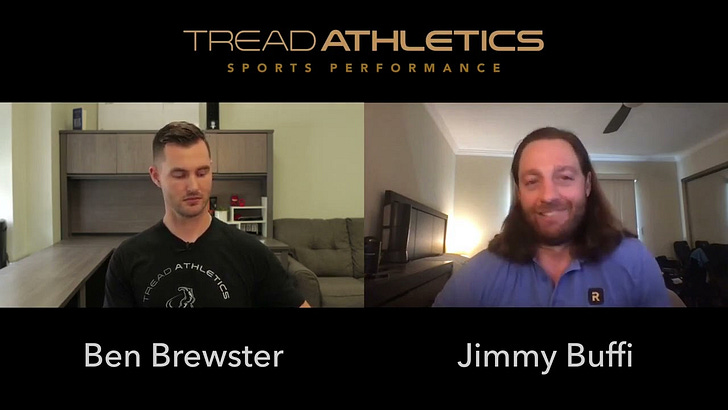A Sit Down with Tread Athletics
Every other week I write an email discussing what I learn launching and growing Reboot Motion. If you would like to receive it directly in your inbox, subscribe below.
“Reboot Motion helps coaches help athletes move better”.
While the ultimate goal is helping athletes perform better, we know the best avenue to do so is through great coaches.
This belief allows us to double down on what we are great at- movement analysis- and let others handle the rest.
That is why we were so excited to have our CEO, Jimmy Buffi, sit down with Ben Brewster of Tread Athletics.
They covered a wide range of topics from 1) how biomechanists and coaches work best together 2) why we use momentum and 3) trying- or rather not trying- to predict injuries.
The full episode can be found here, and some of our favorite clips are below.
For the coach
Great tech should empower coaches, not replace them.
Above, Jimmy explains exactly why.
Reboot analyzes momentum. We know why the ball or the bat moves the way it does.
What we don’t know is how specific players internalize information, how they best train, and a multitude of other things that are only gained via long-term relationships built on trust.
Ben clearly agrees- and talks about how he stays within his area of expertise as well. He’s a great coach and looks for help elsewhere.
Momentum
It is nothing new for us to talk about our love for momentum. We prefer it to:
Joint angles, as momentum shows true cause and effect, not just correlations.
Velocity, which does not account for mass or direction.
Injuries
The final three clips touch a topic that is always on the forefront of athletes’ and coaches’ minds: injuries.
While we can’t predict injuries, and would be weary of anyone who claims they can, we can discuss from a first principles perspective what should generally help or hurt.
Torque
Measuring torque via wearable devices is becoming more and more common throughout baseball. And, while torque is a better measurement of stress than 1) pitch count or 2) nothing (the two previously available metrics), it does have its flaws.
Most notably, there is no way to know what portion of the torque value is stress placed on the ligaments the pitcher wants to protect vs stress handled by protective muscle.
Ben does a great job talking about how coaches can best protect their athletes. Regardless of torque measurements, 1) strengthening the surrounding muscles and 2) not pitching in a fatigued state should always help.
Curveballs vs Fastballs
Continuing the theme of “it depends”, Ben and Jimmy break down why we cannot say if curveballs are more likely than fastballs to cause injuries.
Jimmy explains that, for a given torque, curveballs will cause more stress on the UCL, as “the more supinated the forearm posture, the less able the muscles are to generate protective force”.
However, Ben and Jimmy both note that torque is not equal, as fastballs are generally thrown harder.
Ramp Up
Jimmy and Ben end the conversation with the same first principles thinking they had throughout. No matter the pitch type or workout, they stress the need to “ramp up” and gradually increase the stress put on the body as a way to reduce injury risk and develop skills the right way.



